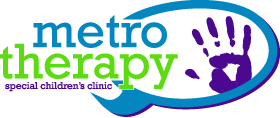Spring 2020 Newsletter
Positive Reinforcement
What is it?
Positive reinforcement is a reward for doing something well. Changes in behavior can be encouraged by using praise and positive reinforcement techniques at home
Examples:
Getting praise for playing nicely with a sibling
Receiving a gold star from your kindergarten teacher when you spelled your name correctly
Got an allowance for completing chores
Got to go to favorite restaurant because of good grades on report card
Negative reinforcement is a penalty for not doing something. It is easy to primarily use negative reinforcement, such as shouting, “Put that back!” and “keep your hands to yourself!”
Examples:
Getting yelled at because you did not clean up your mess
Not getting dessert after dinner because you did not finish your vegetables
Receiving a “tardy” for not showing up to school on time
Source for definitions: (https://pavlok.com/blog/positive-vs-negative-reinforcement-which-is-more- effective/)
Parents can encourage more improved behaviors using positive reinforcement. Notice good behaviors in more descriptive and specific ways
Examples:
Instead of, “Thank you for pushing in your chair,” try, “You pushed in your chair just like this (*demonstrate to child*), so now our kitchen is safe.”
Instead of, “Good job, keep up the good work,” try, “You worked hard on stacking those blocks until you figured it out. That took persistence.”
Instead of, “I wish everyone cleaned up like you do. You are such a good helper!” try, “You got this paper towel and cleaned the water off the floor, so now everyone will be safe from slipping.”
Adapted from Becky Bailey’s text Conscious Discipline
Building your encouraging, positive vocabulary:
Work to avoid saying “no” or “don’t” all of the time. If we say, “Don’t do that,” or “No running inside,” or “Don’t drag your coat in the dirt,” your child has that thought and image embedded in their mind, and more often than not, they will be more encouraged to do exactly what you don’t want! Instead, try saying what you want them to do! This method will encourage critical thinking and self-regulation skills. Talking through the problem-solving process in close proximity to the child and explaining why certain behaviors are expected will also encourage children to better understand and follow social norms. For example, say, “Put the toy back in the bucket like this, (*show child what you mean*) and then our living room will be safe and clean for you and the rest of the family.”
Positive Vocabulary Examples:
I appreciate when you...
Thank you for sitting safely on your chair
I like how you kept trying until you figured it out!
I like the way you remembered to pick up your toys before bed time.
Thank you for helping me clean up this mess!
You tried so hard to share your things with your sister; that made me feel very happy!
You did it! You (Picked up the toys!), so (now we can walk through the living room safely). That was helpful!
Adapted from https://childdevelopmentinfo.com/how-to-be-a-parent/communication/talk-to-kids- listen/#gs.waoc25
Staff Continuing Education
Katy, Becka, Lindsey and Veronica are currently enrolled in the Ayres Sensory Integration Certificate course and will become certified in November of 2020.
Erin has taken Differentiating Sensory from Behavior. She learned to identify the difference between sensory-based behaviors, how to focus on strengths and the best methods for quick solutions.
Kelsey and Jessica both took Oppositional, Defiant & Disruptive Children and Adolescents
Sarah has taken Diagnosis and Management of Childhood Apraxia of Speech Using DTTC and Navigating Ethical Predicaments in Your Work with Diverse Students
Brittany has taken Diagnosis and Management of Childhood Apraxia of Speech (CAS) Using Dynamic Tactile and Temporal Cueing (DTTC), Developing Critical Thinking Skills in Pediatric Dysphagia: Part 1- Postural Stability and Oral Motor Feeding Disorders as well as 7 Steps for Teaching Pretend Play
Look for our new website launching in March 2020.
Clinic Closures:
May 25th in observance of Memorial Day
Mark your calendars for the following dates:
Spring Lake Park Tower Days Parade on June 4th .
Afternoon in the Park on Saturday June 6th from 1 to 4.
